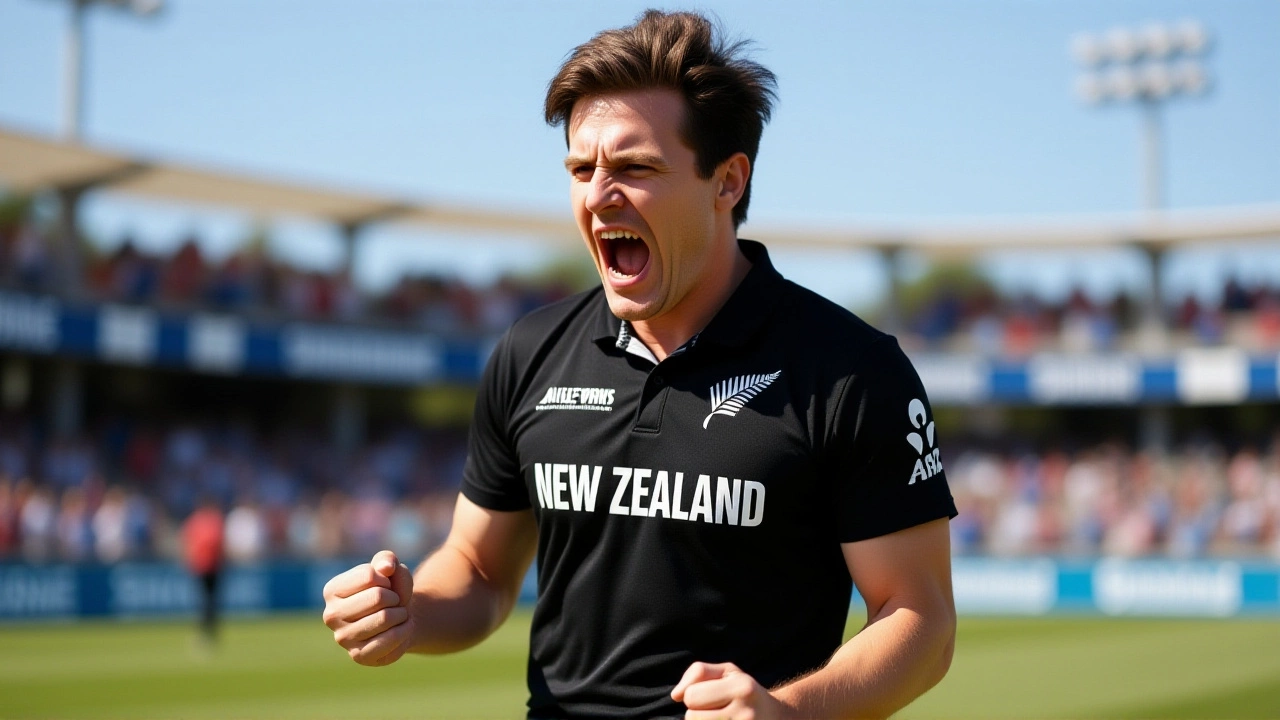
When Nathan Smith stepped onto the pitch at McLean Park in Napier on November 19, 2024, few expected him to become the hero of the day. But with seven overs, 42 runs, and four devastating wickets, the right-arm medium-fast bowler delivered the performance of his young ODI career — and handed New Zealand an unassailable 2-0 series lead over West Indies. Rain had trimmed the match to 34 overs per side, but Smith didn’t let the shortened format slow him down. His figures of 4 for 42 weren’t just his best — they were the difference between a close contest and a decisive victory.
Breakthrough on a Damp Pitch
Smith’s spell wasn’t about pace alone. It was precision, movement, and timing. He removed Akeem Auguste with a sharp in-swinger that clipped the off-stump, then had Roston Chase caught behind with a subtle out-cutter. Two overs later, Justin Greaves was pinned lbw after a low, skidding delivery kissed the pads. The final blow came against Matthew Ford, who tried to heave a yorker over midwicket — only to top-edge it to deep square leg. The crowd rose as one. Smith didn’t celebrate wildly. He just nodded, wiped his brow, and walked back to his mark. That calmness? That’s what makes him dangerous.
His economy rate of 6.00 in those seven overs was a masterclass in containment. In a format where batters often look to dominate from ball one, Smith made every over count. His four-wicket haul was his second in ODIs — the first coming against Pakistan earlier in 2024 — and it was his first in a home series. What made it even more remarkable? He hadn’t played in the first match. The selectors had held him back. He waited. And when his chance came, he seized it like a man who’d been training for this moment since childhood.
A Quiet Rise from Dunedin
Nathan Smith was born in Dunedin, in the Otago region of New Zealand’s South Island. He doesn’t have the flashy resume of a global superstar. No IPL contracts. No T20 franchise fame. Just steady, relentless improvement. He debuted for Otago in first-class cricket back in March 2016 — and since then, he’s been the quiet workhorse of domestic cricket. He was part of New Zealand’s U19 World Cup squad in 2016, a sign that the system had spotted him early. But international selection? That took years of patience.
His ODI debut came only in 2024 against Sri Lanka. Since then, in 14 matches, he’s taken 18 wickets at an average of 32.50, with an economy rate of 6.71. Not eye-popping numbers on paper — but in context, they’re vital. He’s not the express pace bowler. He’s the one who gets you the breakthrough when the pitch is slow, when the dew is settling, when the batters think they’ve settled in. That’s his value.

The Team Behind the Hero
Smith didn’t do it alone. Kyle Jamieson was equally impressive, claiming 3 for 44 in seven overs, including two maidens. Captain Mitchell Santner and Blair Tickner chipped in with crucial wickets. But it was Smith’s spell that broke the back of the West Indies innings. They were 137 for 3 when he came on. By the time he finished, they were 184 for 7. The target of 225, set under DLS rules, suddenly looked daunting.
And yet, New Zealand didn’t panic. Devon Conway — the man who’s become their most reliable anchor — played a composed 82 off 94 balls, steering them to victory with 21 balls to spare. But ask anyone in the New Zealand camp, and they’ll tell you: Smith’s spell made Conway’s job possible. It wasn’t just about runs. It was about momentum. It was about belief.
What This Means for New Zealand’s Future
For years, New Zealand’s pace attack has relied on veterans like Tim Southee and Trent Boult. But with both nearing 35, the next generation is being tested. Smith, at 28, isn’t a teenager. He’s not a prodigy. He’s a professional who’s earned every run, every wicket, every selection. His performance in Napier didn’t just win a match — it signaled a shift. New Zealand’s bowling depth is no longer just about the stars. It’s about the unsung, the overlooked, the ones who show up when called.
The Board of Control for Cricket in New Zealand has already hinted that Smith will feature in the upcoming home series against South Africa. And if he keeps this form, don’t be surprised if he’s named in the squad for the 2025 Champions Trophy. He’s not the flashiest name. But in cricket, the quiet ones often outlast the loud ones.

Behind the Numbers: Smith’s ODI Career So Far
- Matches: 14
- Innings: 14
- Wickets: 18
- Average: 32.50
- Economy Rate: 6.71
- Best Bowling: 4/42 (vs West Indies, 2024)
- 4-wicket hauls: 2 (Pakistan, West Indies)
He’s not just a one-match wonder. He’s building something. And this time, the cricket world is watching.
Frequently Asked Questions
How does Nathan Smith’s performance compare to other New Zealand bowlers in recent ODIs?
Smith’s 4/42 is the best ODI bowling figures by a New Zealander since Matt Henry’s 5/28 against Sri Lanka in 2023. Among current New Zealand bowlers, only Kyle Jamieson has posted better economy rates in recent series — but Smith’s impact came in a high-pressure, rain-affected chase. His 6.00 economy in seven overs was the most economical spell by a New Zealand pace bowler in a 34-over ODI since 2021.
Why wasn’t Nathan Smith selected for the first ODI against West Indies?
New Zealand’s selectors opted for a more experienced pace trio in the first match — Jamieson, Southee, and Neil Wagner — to handle the conditions in Wellington. Smith was held back as a contingency. The decision paid off: when the pitch in Napier offered more seam movement and the West Indies batting order looked vulnerable, Smith was the perfect fit. His selection was strategic, not accidental.
What’s the significance of Smith’s two 4-wicket hauls coming against Pakistan and West Indies?
Both teams are known for strong middle orders — Pakistan’s consistency under pressure and West Indies’ explosive hitters. Taking four wickets against either is tough. Doing it against both in the same calendar year signals Smith can handle high-pressure scenarios against top-tier batting lineups. Only three New Zealand bowlers have achieved this feat since 2020.
Could Nathan Smith become a regular in New Zealand’s ODI side?
Absolutely. With Trent Boult and Tim Southee entering the twilight of their careers, New Zealand needs reliable pace options who can bowl in the powerplay and middle overs. Smith’s control, consistency, and ability to adapt to conditions make him a perfect fit. He’s not a finisher, but he’s a disruptor — and that’s exactly what New Zealand’s current ODI setup needs.
What’s next for Nathan Smith after this performance?
Smith is expected to be named in New Zealand’s squad for the home series against South Africa in December 2024. If he continues his form, he could also be in contention for the 2025 Champions Trophy. His domestic record with Otago remains strong, and his recent international breakthrough has made him a priority for selection across formats — especially in ODIs where depth is crucial.
